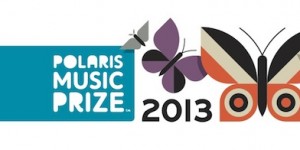 Music
Music
Q & A: Kid Koala on the trials and tears of his new graphic novel and soundtrack, 'Space Cadet'
by Nicole Villeneuve
October 31, 2011
Kid Koala, aka Eric San, didn’t expect that it would take him eight years to finish his newest project, Space Cadet. His second graphic novel and accompanying soundtrack (the first was 2003’s Nufonia Must Fall), Space Cadet tells the tale of a doting robot whose astronaut leaves to live her dream—go into outer space. The guardian robot is left without purpose, searching for ways to fill the void.
The soundtrack, thought of in bits throughout the illustration process but ultimately written to the visuals after the fact, is, much like the book, as alienating as it is uplifting. At times sparse and soft, but others full of as much life as texture, San says the trick was to restrain, and so, you won’t hear too many noticable turntables throughout—though he swears they’re there.
We spoke with the always affable artist on the phone from Montreal about his modern-day tale of connectedness, loneliness, family, and optimism.
AUX: You did all of the book’s illustrations on etch board. Is this the first you’ve worked with them?
Kid Koala (Eric San): This is the first project I’ve done with etch boards. But I started this project in 2003, so now I’ve been working with them for many years. I like it. I like the nuance to it.
Was that to give it the darker feel?
I wanted to work with the materials. The idea of the universe, in terms of graininess. The other reason was actually quite simple, which is that I knew the book was set in space, and I thought it would save me time, because I wouldn’t have to do the space (laughs). Obviously it didn’t save me any time at all.
So you didn’t expect it to take this long.
Well one of the first pages I did was just of the rocket on the horizon, ready to be sent off. That didn’t take long, so I thought, “oh I’ll be done this book in like a month!” But what I didn’t realize was that, once I started doing the more involved indoor stuff, the stuff with more details, those pages would take up to like 50 hours. Which in my life, with touring and everything, would be like two weeks. It didn’t take me long to figure out that there was no end in sight. So I just basically stopped talking about this book until I knew I was in the home stretch. Which was about a year and a half ago.
Were there any unexpected turns in the story or music that you didn’t have planned?
I think the response thus far is surprising to me. Mainly because the main reaction I get, like 85% of the time, is that it’s made people cry. And the other reaction is that it’s made them call their parents (laughs). Which I think is sweet and completely valid. I guess it depends on your personal optimism, but I didn’t think it was that sad of a story. I found it had an optimistic ending in a way. Maybe they were just more vulnerable when they read it (laughs).
Some of it feels kind of lonely, too, I thought.
I wanted to approach the feeling of isolation without actually being like “we are in the depths of loneliness!” It was more about keeping it a little restrained. Even with the music, there’s ways you can push arrangements to make it sort of tear-jerky. That’s not what the story’s about. A lot of the time, I’d be on tour, working on a panel or something in some random hotel room in some city. There’d be a disconnect between like, where do I live? Where am I? Or I could be out walking through the city and not understand a word that anyone is saying and feel completely lost. You have this feeling that you could be drifting through space in some ways. But underneath it all I have a personal optimism that there is a connectedness. And I try to focus on that.
And I understand that the story was inspired by your daughter, and being a parent.
Yeah. I started it before that, but that really hammered home what this story was about for me. Experiencing these things first hand, or having it bring back memories of being a kid and my parents raising me.
The score is really piano-based.
Yeah, but there are actually turntables on every track. I challenge even the most microscopic DJ listener to find the turntable work on every track! Underneath it all, it was about the feeling of the score. And it was an exercise in not letting the scratching hijack the feeling of a musical piece. I did write them all on piano first, so that was already the primary instrument. So all the scratching was supposed to be more supportive, or counter-melodies, or things that would help the mood of it. As opposed to being on top of the music or something. I wanted it to be just a part of it.
Me not being a microscopic DJ scientist, I’m definitely not hearing all of it. What are some of the hidden turntable gems here?
The turntable has a huge range. And on Space Cadet, I didn’t want it to take over the songs, which it can easily do. So I tried to keep it in the harmonic realm, which is the stuff most people can hear, or the sound design ambient realm, which isn’t as easily picked out. Unless they’re searching for it. And have good headphones on (laughs). But yeah, some of it is, you know, I almost went into physics, so I know there’s no sound in space. But there’s this concept of what space sounds like. And that was part of it too.
Tags: Music, Interviews, News, Kid Koala





